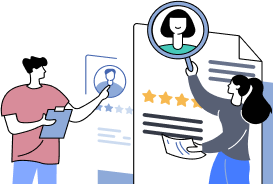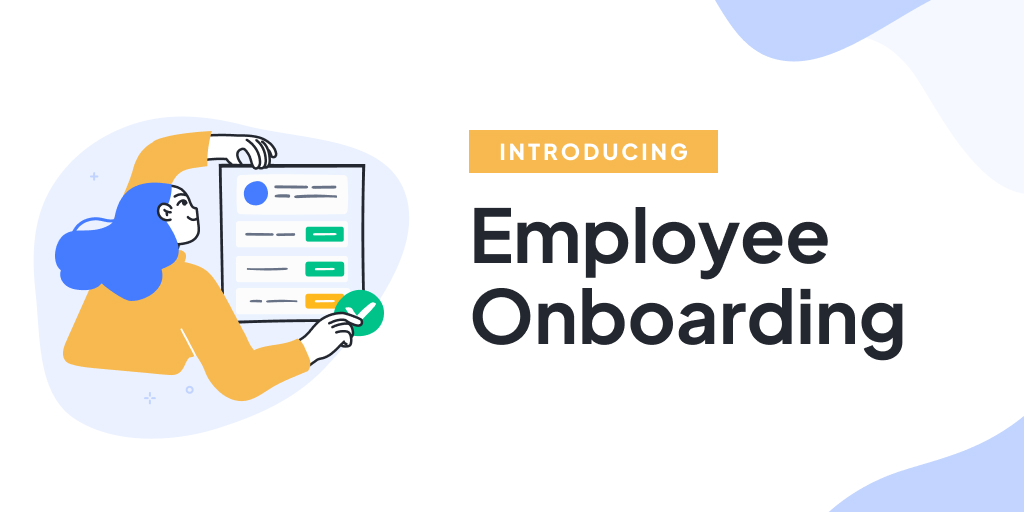Ever felt like you're in a maze, blindfolded and on roller skates when starting a new job? You might be familiar with the countless forms to fill out, policies to read, meetings to schedule. It's as though we've strapped ourselves into an endless ride of administrative tasks.
But what if I told you there was another way?
A path where new team members are not just onboarded, but welcomed with ease and efficiency. A process that doesn't leave them feeling overwhelmed but empowered. This is the world of automated onboarding.
In this post, we'll walk through how automated workflows can streamline HR processes and make your company culture more inviting for newcomers. We will also discuss how implementing digital forms helps reduce human error and boosts employee productivity.
By delving into automated workflows, you'll uncover a range of potentials. So, let's dive in and see what we can uncover together!
Understanding Automated Onboarding
Onboarding new team members is a crucial step in setting them up for success. But, traditional methods can be tedious and prone to human error. That's where automated onboarding steps into the spotlight.
An automated onboarding process streamlines tasks like paperwork processing and data entry. No more manual work or lost documents. It ensures that every employee receives consistent training content, creating an even playing field from day one.
Automated workflows, part of this system, are designed to cut down time spent on administrative tasks during hiring. This helps accelerate the process and minimizes the risk of errors by diminishing human error.
The Role of Automation in Onboarding
In any company culture, efficient processes play a key role in retaining employees and enhancing their productivity. The onboarding process is the first impression to most candidates meaning it needs to be smooth as to not turn away your potential best employees.
A study showed that companies relying heavily on manual data entry had higher turnover rates because new hires felt disconnected from the organization. Employee onboarding automation can really help ease high turnover pressures throughout the onboarding program.
To fix this issue, introducing an automation platform lets you give your new hires a warm welcome without being bogged down with mundane chores. It enables you to track your employees' progress through digital forms instead of stacks of paper files—sounds relieving already?
Automating HR Processes for Better Onboarding
The magic of automation can turn the traditional, manual process of onboarding into a seamless and engaging experience. Automating the onboarding process can help to make new employees feel part of the team right away, rather than just being a speedy or efficient process.
According to HRIS data, companies that automate their onboarding processes often dodge costly fines and penalties because they're more likely to comply with legal requirements. Automation gives us this safety net by ensuring consistency in policy application across all hires.
The Impact of HR Automation on Employee Engagement
But there's even more value in automating your employee onboarding than compliance alone. The right blend of digital forms, automated workflows, and learning management systems lets you build an immersive journey that connects each new hire to the company culture straight away.
This isn't conjecture - according to LMS reports, those who've undergone automated onboarding show higher engagement levels. Think back: we’ve all had our first days at work filled with mountains of paperwork—manual tasks so mundane they distract us from truly integrating into our roles. Now imagine if we could swap these out for interactive online sessions? Sounds like a dream come true.
Choosing the Right Onboarding Software
To begin, you must select software that suits your individual requirements. No single solution is ideal for everyone - it's essential to pick a program that matches your particular requirements.
Your onboarding automation platforms selection can make or break your implementation process. Picking an adaptable system allows for seamless integration into existing workflows.
You want to be in that sweet spot where automating employee onboarding isn't just another project but part of everyday operations. But remember. Your workforce will also need time to adapt so keep those expectations realistic.
The trend towards adopting automated processes is expected to ramp up over the next 6-12 months as more organizations see its benefits firsthand.
This adoption wave offers ample opportunities for shared learning among companies—don’t miss out.
Enhancing Employee Experience with Automated Onboarding
A well-oiled automated onboarding process is more than just a time-saver. It's the first step to creating an exceptional employee experience, making new team members feel valued from day one.
The Role of Personalization in Onboarding
Nobody enjoys feeling like a replaceable part. That’s where personalized onboarding comes into play, letting you tailor experiences to each new hire. This makes them feel unique and acknowledged.
Digital workplaces make this personal touch possible by enabling tailored learning paths based on individual roles or departments. By doing so, employees get relevant training content right off the bat.
An interesting fact here: companies that nail their onboarding experience can improve employee retention rates by 82%. Moreover, such employees are likely to stick around for at least three years. If you need proof about how vital effective employee engagement is during this phase - consider this stat: a whopping 93% of new hires believe their onboarding process decides whether they will stay with a company or not.
So there we have it – implementing automated processes isn’t merely a tech upgrade; it's an investment towards building your company culture and retaining top talent.
Streamlining Administrative Tasks through Automation
Think about the countless hours HR teams spend on administrative tasks. Studies show that a whopping 73% of their time is dedicated to this. But, what if there was a way to give some of that time back?
Welcome to the world of automation. With tools like Paperwork Processing Software and digital forms, we can automate these mundane tasks.
No more manual data entry or tedious paperwork processing. Instead, you get an automated workflow designed for efficiency. This means less room for human error and quicker turnaround times. Imagine having all your new hire's onboarding documents processed in record time.
Besides speeding up processes, automating administrative tasks also reduces costs associated with manual work. It lets HR professionals focus more on strategic activities like improving employee retention rates.
This isn't just theoretical talk; companies have seen real results from implementing automation in their onboarding process. Automated workflows help new hires complete simple tasks faster, saving them valuable settling-in-time.
Automation doesn't mean losing touch though. It can actually enhance interactions between hiring managers and team members by freeing up more face-to-face time previously spent buried under admin work.
So let's make life easier by embracing technology today – it’s not only smart but efficient too.
Ensuring Compliance with Automated Onboarding
When we talk about automated onboarding, one aspect that takes center stage is compliance. With an automated workflow, it becomes easier to ensure consistency and adherence to company policies.
Automation offers a straightforward approach to dealing with intricate activities. Manual onboarding processes often leave room for human error. But with an automated process, you can make sure every step aligns perfectly with your legal requirements and company standards.
This doesn't just help your team members start off on the right foot - it's also crucial from a business perspective. A negative onboarding experience could lead to new employees looking elsewhere - upping this risk by 200% according to some studies. And let's not forget about potential fines or penalties due to non-compliance issues.
Making Automation Work for You
A robust automation platform lets you create standardized digital forms and training content tailored specifically towards each role within the organization. It makes tracking employees' progress simpler, reducing manual work involved in administrative tasks like scheduling meetings or data entry.
Incorporating feedback mechanisms into your system allows you not only to gather insights but also to identify areas where improvements are needed most effectively.
Culture-Driven Compliance through Automated Onboarding
Fostering a culture of compliance isn’t always easy – but thanks again go out there who’ve embraced technology as their ally when trying to build strong ethical foundations at organizations they serve. Automating certain parts helps reinforce behaviors that contribute to overall success while promoting positive employee experiences all around too: a win-win situation if there ever was one.
Future Trends in Automated Onboarding
The world of onboarding is constantly evolving, and it's clear that automation is the future. Let's look at some trends shaping this shift.
Trend 1: AI-Powered Personalization
AI technology will play a significant role in automated employee onboarding. By gathering data about new hires, AI can help create personalized experiences to make employees feel valued right from the start.
Trend 2: Virtual Reality (VR) Training
Innovations like VR are changing how we train our team members. Imagine an immersive experience where your new hire learns about company culture without even stepping foot into the office.
Trend 3: Enhanced Employee Retention with Automation
Automation doesn't just speed up administrative tasks; it improves employee retention too. A well-executed automated process ensures consistency and efficiency, contributing significantly towards enhancing overall job satisfaction among newly onboarded staff.
Trend 4: Seamless Integration with HR Systems
A smooth integration between various systems will be crucial for successful implementation of onboarding software. This interoperability helps streamline workflows while reducing manual work and human error.
Let's jump on the bandwagon and get ahead of the game by embracing these advances quickly. So let’s welcome these changes as they pave the way for a more efficient and engaging onboarding experience.
FAQs in Relation to Automated Onboarding
What is automated onboarding?
Automated onboarding leverages technology to streamline the process of integrating new hires into a company, making it efficient and error-free.
How do you automate user onboarding?
You can automate user onboarding by implementing software that handles tasks like paperwork processing, benefits enrollment, and training schedules.
What are the 4 phases of onboarding?
The four stages of onboarding are: pre-arrival preparation, orientation at work, role integration including mentoring or coaching programs, and finally performance management review.
What are the benefits of automating onboarding?
Automating your onboarding boosts efficiency, enhances compliance with regulations. It improves the new hire experience, which can increase employee retention rates significantly.
Conclusion
Revolutionizing HR isn't just a dream anymore, it's possible with automated onboarding. It streamlines administrative tasks, enhances employee experiences, and ensures compliance. The time to transition from manual processes is now. A smoother journey for new hires? You've got that covered by choosing the right onboarding software based on your organization's specific needs.
Better engagement during the critical early days of an employee’s tenure? Automated workflows are there to make this happen. Your team members feeling part of company culture from day one? Personalized onboarding has shown its magic here too!
The employee onboarding process can be tough. Let automated onboarding save you time and effort. The future awaits us all in automating HR processes - a trend not only about efficiency but also about creating meaningful connections within our teams.





